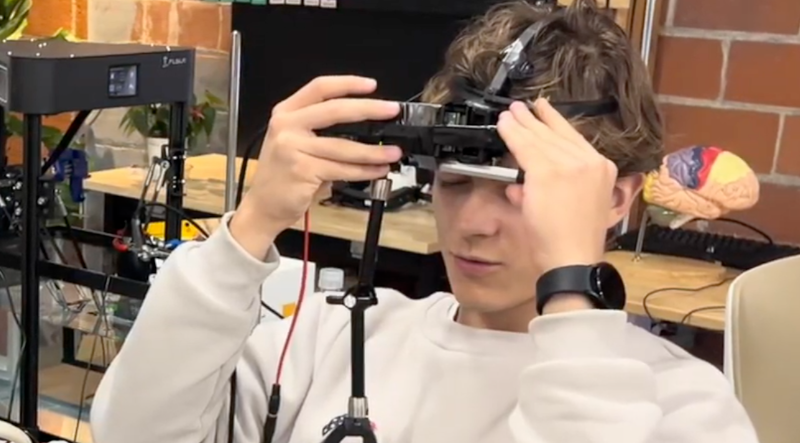A team of researchers has made a significant breakthrough in the field of sensory stimulation by using ultrasound to evoke smells. Led by Lev Chizhov, the study explores an innovative method of targeting the olfactory bulb, the part of the brain responsible for the sense of smell, with ultrasound waves. This approach marks the first attempt to stimulate olfactory responses through this non-invasive technique.
The olfactory bulb is located at the base of the brain, behind the nose, making it a challenge to target with ultrasound due to the air-filled cavities of the nasal passages. Traditional methods of inducing smell have faced limitations, as packing the nose with gel to enhance ultrasound transmission could prove uncomfortable for participants. Instead, the researchers designed a custom headset that places the ultrasound transducer on the forehead, allowing for precise targeting of the olfactory bulb. This innovation was guided by magnetic resonance imaging (MRI), which enabled the team to identify specific areas for stimulation.
So far, the study has involved a sample size of just two participants. Despite this limited scope, the researchers successfully induced the perception of various smells, including fresh air, garbage, ozone, and burning wood. This initial success raises intriguing possibilities for future applications, suggesting that ultrasound could pave the way for new sensory experiences.
The implications of this research could extend into various fields, including virtual reality (VR) and gaming. The concept of “smell-o-vision” could transform how users engage with digital environments, making experiences more immersive. Additionally, industries focused on entertainment and therapy might explore how this technology can enhance emotional responses or create more realistic simulations.
As the research progresses, further studies will be necessary to validate these findings and expand the sample size. The potential of using ultrasound for sensory stimulation opens a new frontier in the understanding of human perception and could lead to innovations that blend technology with our sensory experiences.
While the study is still in its early stages, the initial results highlight the transformative potential of combining neuroscience with advanced technology. As researchers continue to investigate the applications of this technique, the future may hold exciting developments in how we experience and interact with the world around us.
